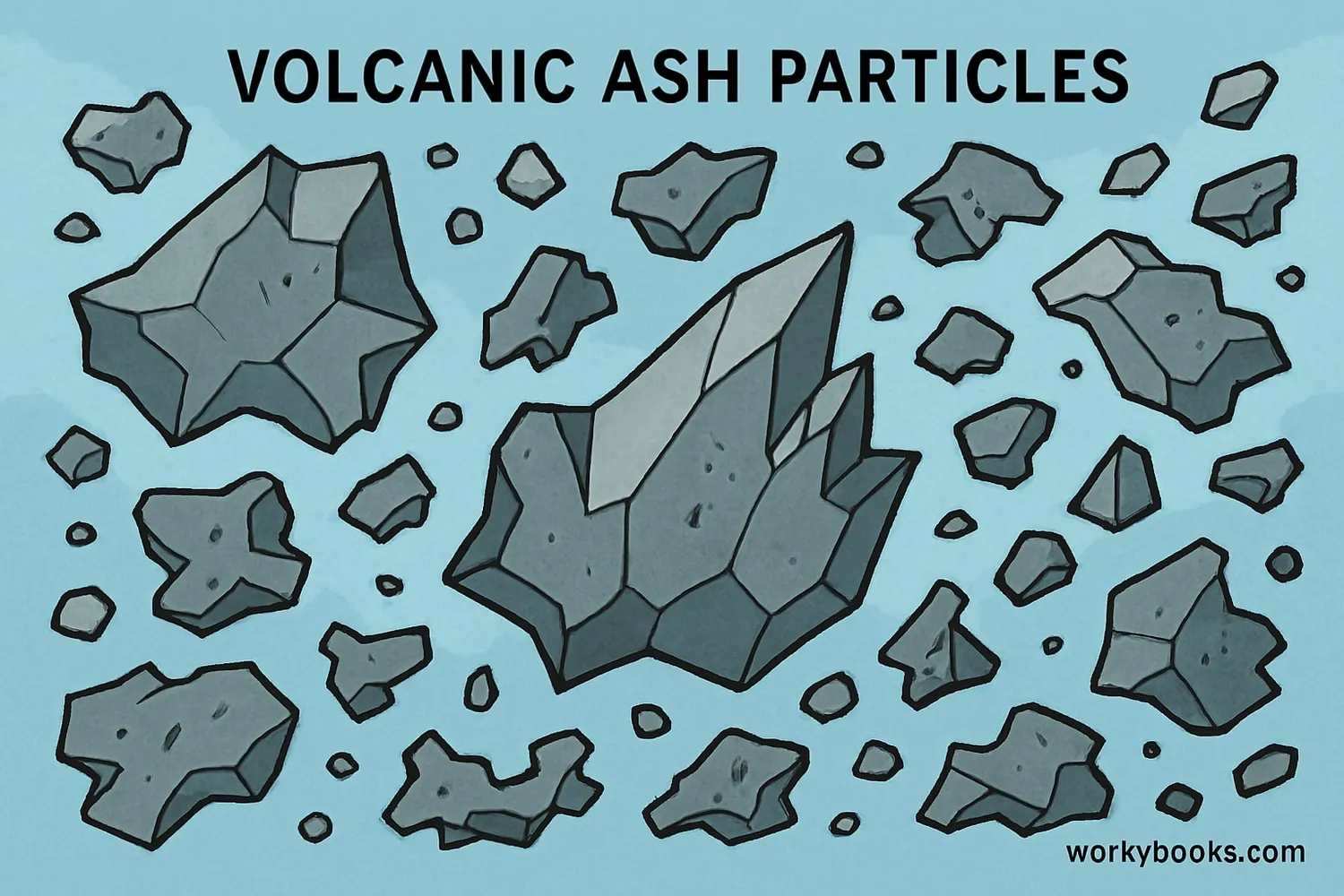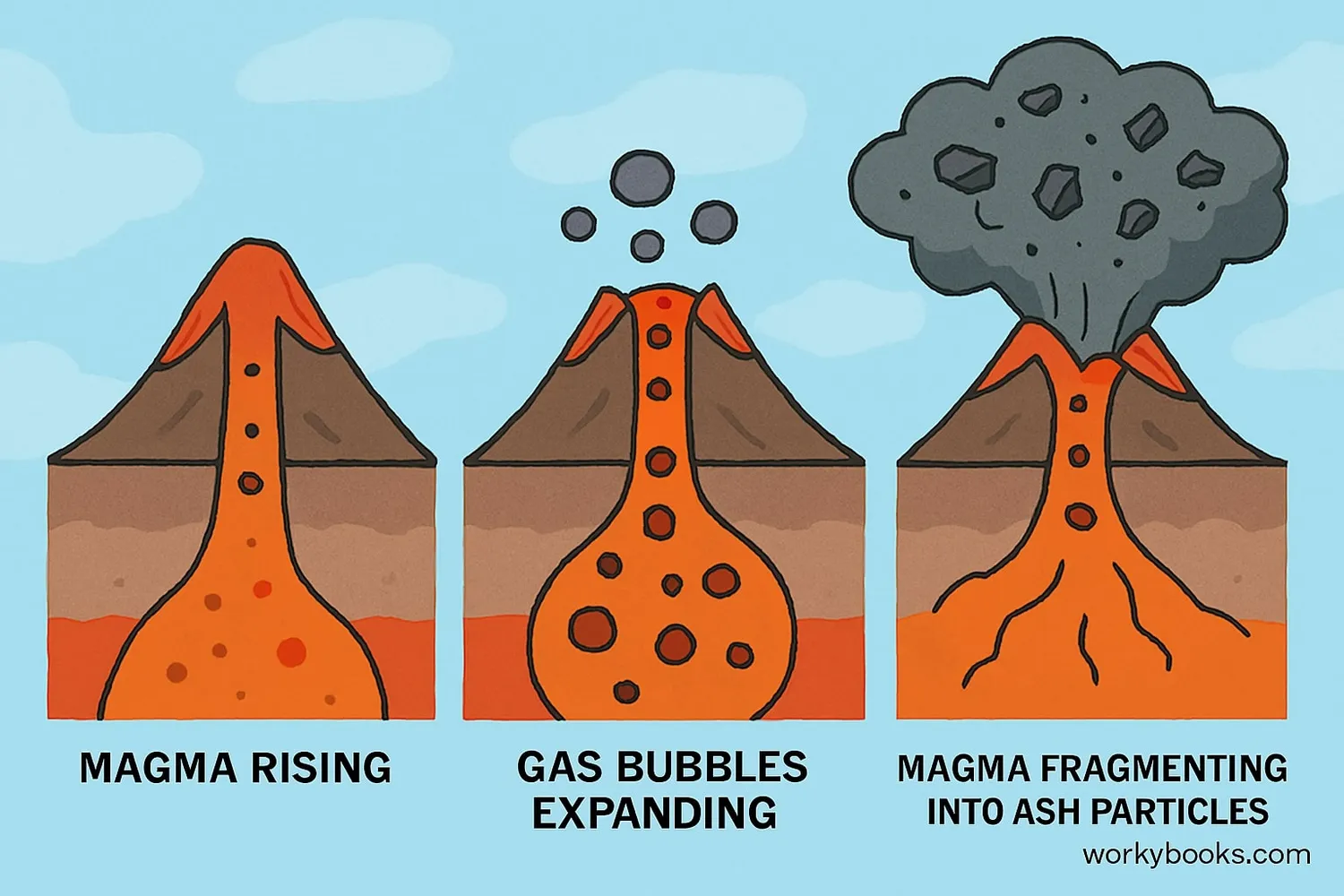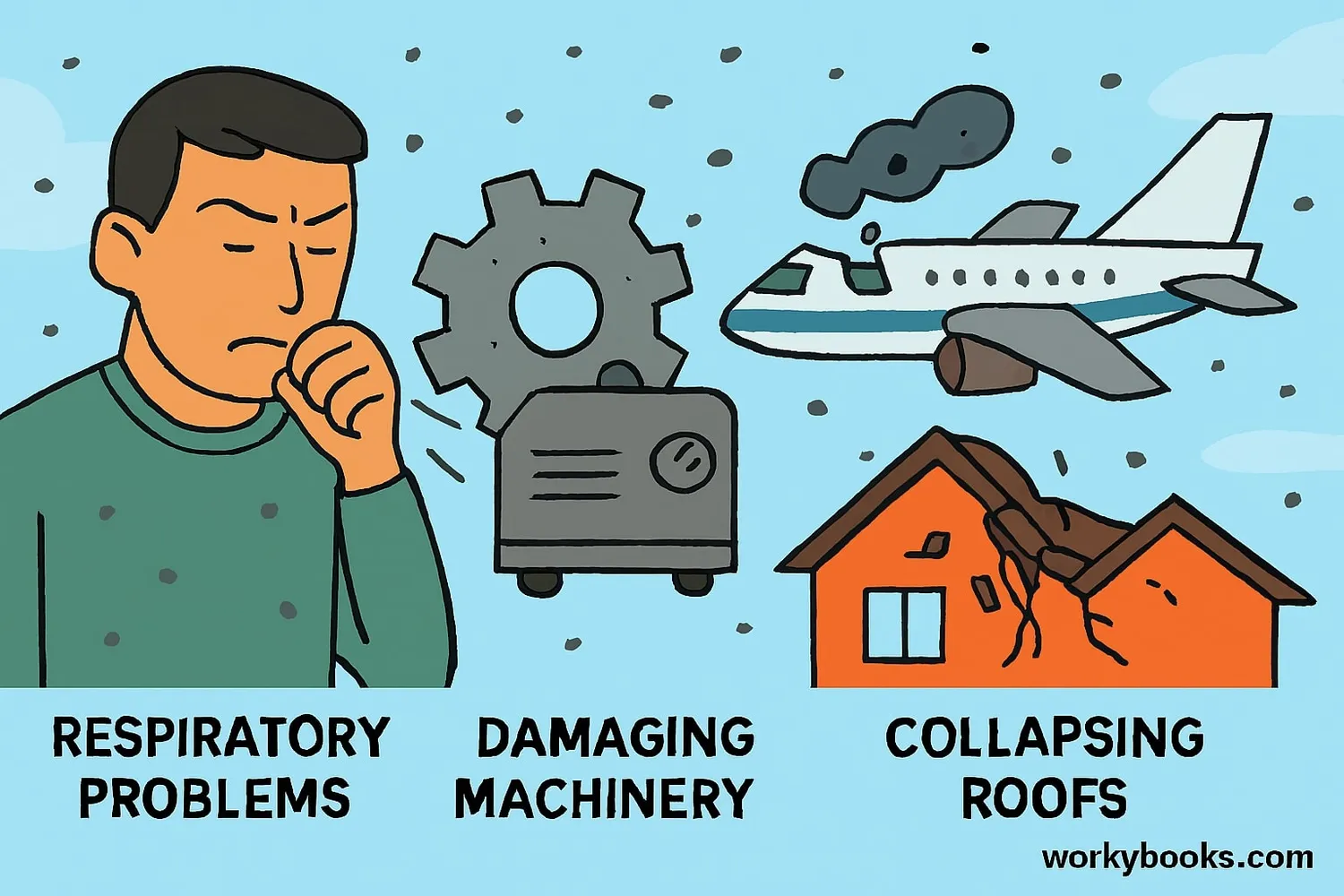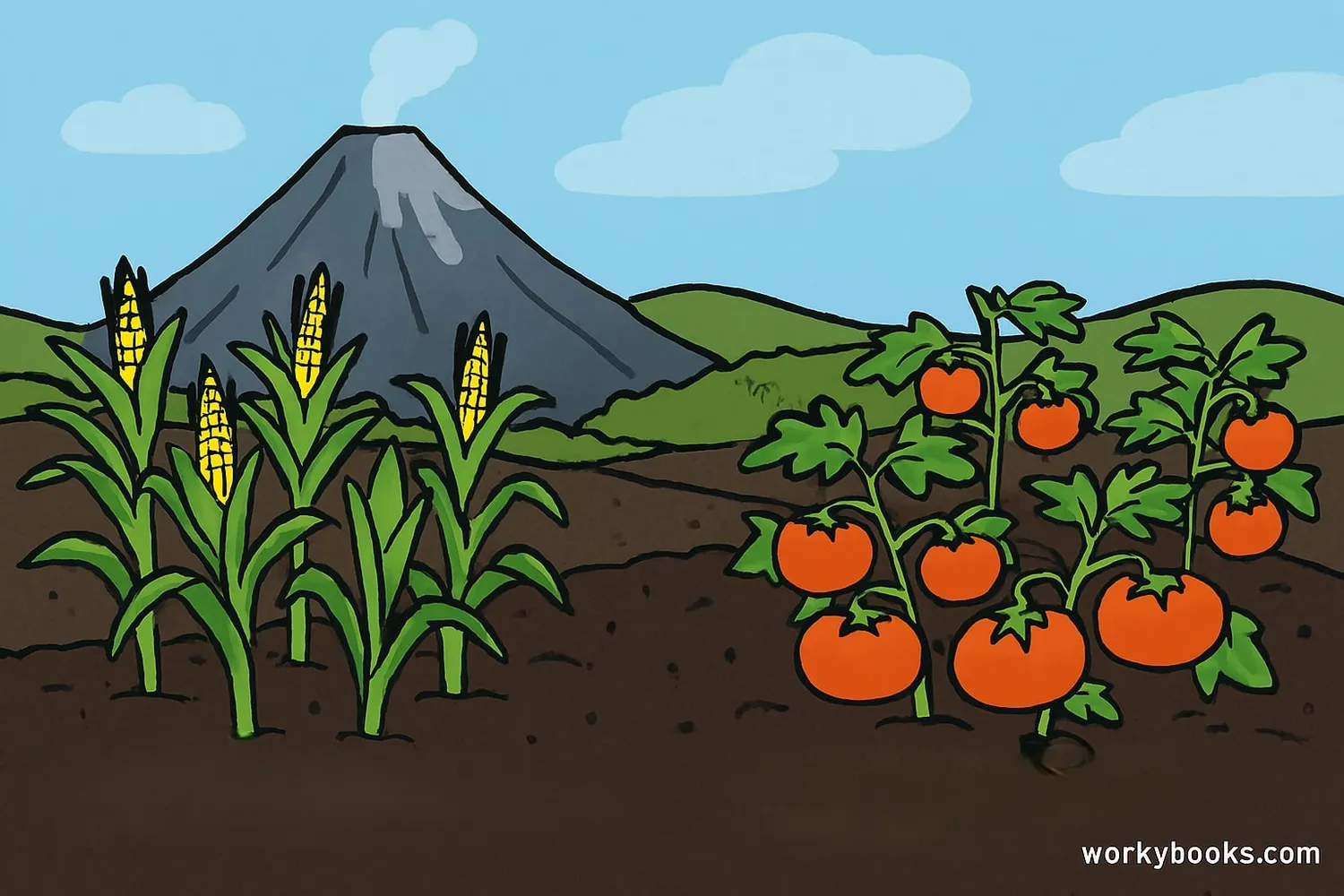Volcanic Ash - Definition, Examples, Quiz, FAQ, Trivia
Discover the science behind volcanic ash, its formation, and impact on our world
What is Volcanic Ash?

Volcanic ash is not like ordinary ash from a campfire. It's actually made of tiny fragments of volcanic rock and glass that are blasted into the air during a volcanic eruption. These particles are so small that they can travel hundreds or even thousands of miles!
Despite its name, volcanic ash isn't soft or fluffy. It's made of sharp, jagged particles that can be as small as 0.001 mm (smaller than a grain of sand) or as large as 2 mm. Scientists call all particles ejected during an eruption tephra, with volcanic ash being the smallest fragments.
Did You Know?
Volcanic ash is so light that it can stay in the atmosphere for weeks or even months after an eruption!
How Volcanic Ash Forms

Volcanic ash forms during explosive eruptions when magma (molten rock) rises quickly to the surface. Here's what happens:
Magma Rising
Magma rises from deep underground, containing dissolved gases
Gas Expansion
Pressure decreases, causing gases to expand rapidly
Magma Fragmentation
Expanding gases shatter magma into tiny particles
Eruption Column
Ash is blasted high into the atmosphere
Ash Cloud
Wind carries ash particles over great distances
The violence of the eruption determines how fine the ash particles become. More explosive eruptions create finer ash that can travel farther. Ash clouds can rise 20-50 km (12-30 miles) into the atmosphere and circle the entire planet!
Explosive Power!
The 1991 eruption of Mount Pinatubo in the Philippines ejected so much ash that global temperatures dropped by 0.5°C for almost two years!
Hazards of Volcanic Ash

Volcanic ash might look harmless, but it creates many serious hazards:
Health Problems
Sharp particles can damage lungs, causing breathing difficulties
Transportation Disruption
Ash clouds can shut down air travel for weeks
Structural Damage
Heavy ash fall can collapse roofs and damage buildings
Other significant hazards include:
• Contaminated water supplies from ash in reservoirs
• Crop destruction by smothering plants
• Engine damage in vehicles and aircraft
• Electrical outages from ash on power lines
During ash fall, it's important to stay indoors, wear masks, and protect electronics and machinery.
Surprising Benefits of Volcanic Ash

While volcanic ash can be destructive, it also provides amazing benefits to our planet:
Fertile Soil
Ash breaks down to create nutrient-rich soil for agriculture
Industrial Uses
Used in construction materials and abrasives
Water Filtration
Porous ash can be used to filter impurities from water
Some of the world's most productive farmland is found near volcanoes because volcanic ash:
• Contains important minerals like potassium and phosphorus
• Breaks down slowly, providing long-term fertility
• Creates well-draining soil that's perfect for crops
Ancient Romans even used volcanic ash to make concrete that's still strong after 2,000 years!
Volcanic Ash Quiz
Test your knowledge about volcanic ash with this 5-question quiz!
Frequently Asked Questions
Here are answers to common questions about volcanic ash:
Volcanic Ash Trivia
Discover some amazing facts about volcanic ash!
Tiny Particles
The smallest volcanic ash particles are less than 0.01 mm across - about 1/10 the width of a human hair! These tiny particles can stay airborne for years.
Ancient Concrete
Romans made incredibly durable concrete by mixing volcanic ash with lime. Some Roman structures built with volcanic ash concrete still stand after 2,000 years!
Global Traveler
Ash from the 1883 Krakatoa eruption in Indonesia circled the Earth four times! People around the world reported vivid red sunsets for three years afterward.
Farming Gold
The rich volcanic soils around Mount Vesuvius in Italy are so fertile they can produce up to three harvests per year! Farmers call volcanic ash "black gold".


